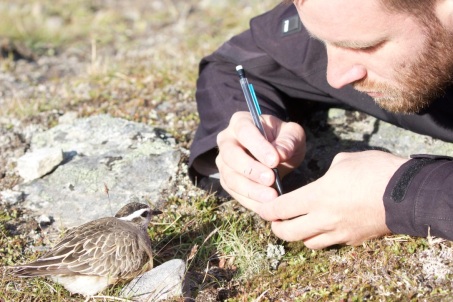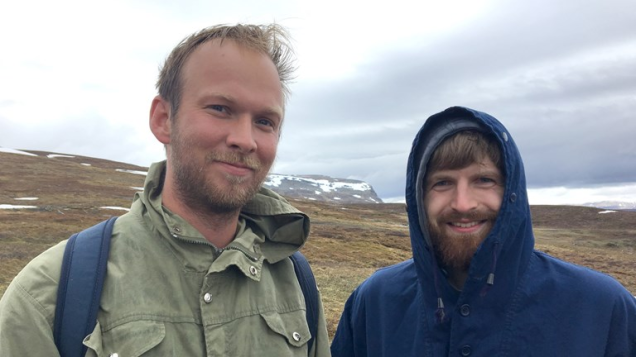Hans and I arrived back home last Friday, after a field season at Slettnes with very interesting but also alarming results.
Until this season, we hypothesized that as long as the food situation is good, the Arctic Skuas would be able to withstand the predation pressure by foxes: skuas would breed in higher densities and be more aggressive. However, this years’ results shows we were wrong. Food situation was obviously very good: huge feeding frenzies of Black-legged Kittiwakes, Herring Gulls, Arctic Terns, other seabirds and marine mammals were feeding on pelagic fish just off the peninsula. Arctic Skuas were obviously taking advantage of this. To get an idea what this feeding activity at sea looks like, please have a look at this video of the near-shore gull activity (and a whale, see if you detect the blows!) and another one below showing four species of skua (both videos compiled by Hans).
Despite the good food situation, the number of breeding pairs did not increase relative to the preceding poor years. Also, aggression levels remained mediocre. And, as already reported in earlier posts, predation rates were high again. Most nests survived for only a few days before disappearing. Contrary to previous years however, many skua pairs produced a second clutch, but many of these clutches were also predated within a few days.
What could explain the high predation rate despite the good food situation? One hypothesis for these patterns is that one fox (or a few?) have specialized on finding Arctic Skua eggs over the past three years. Specialization is impossible to prove with the data available, but one expectation that we can verify is that the same individual fox should reappear in our nest camera pictures. If indeed foxes have specialized on skua eggs, shooting foxes would help decreasing the predation pressure at least until new individuals get specialized.





